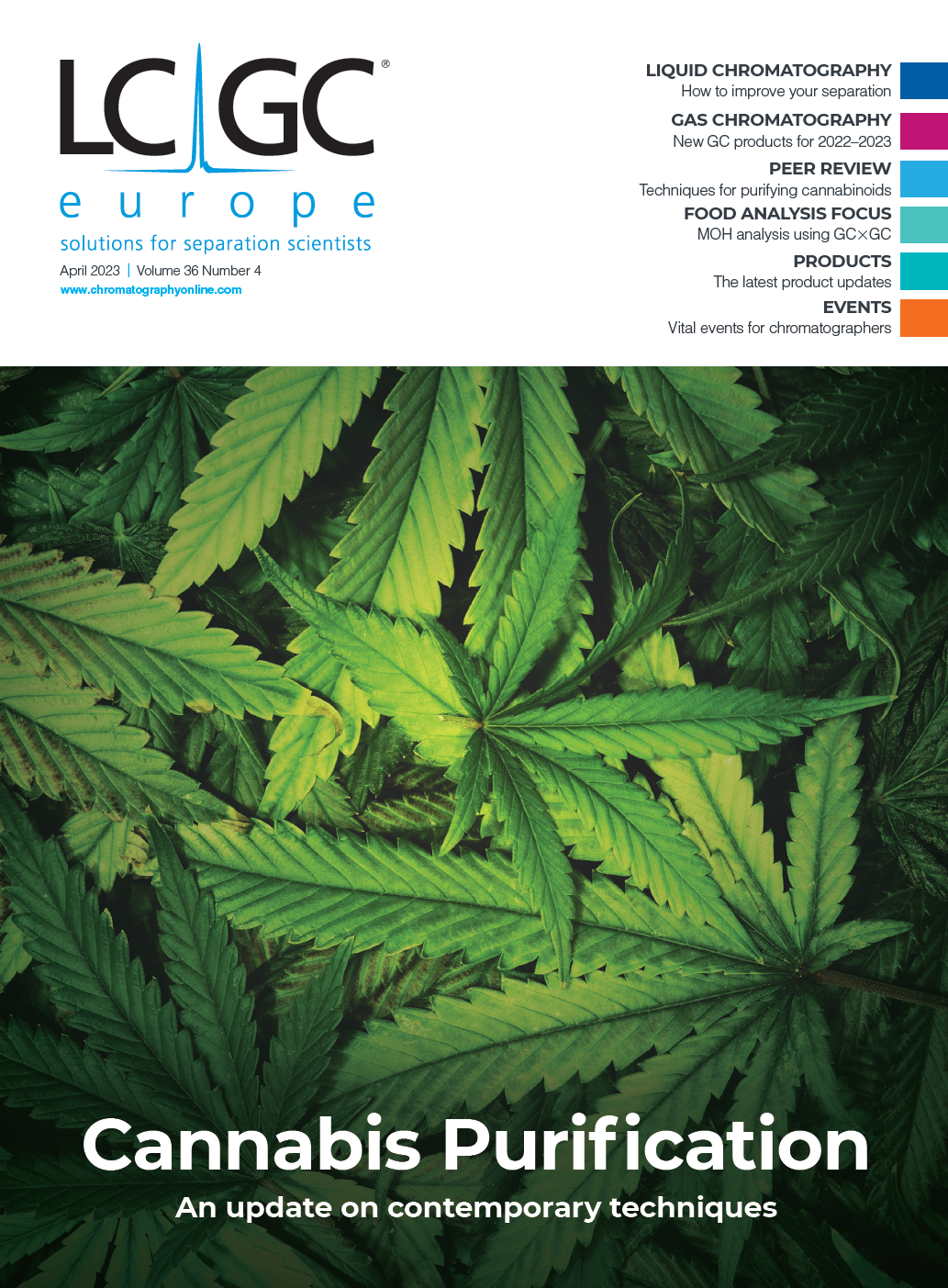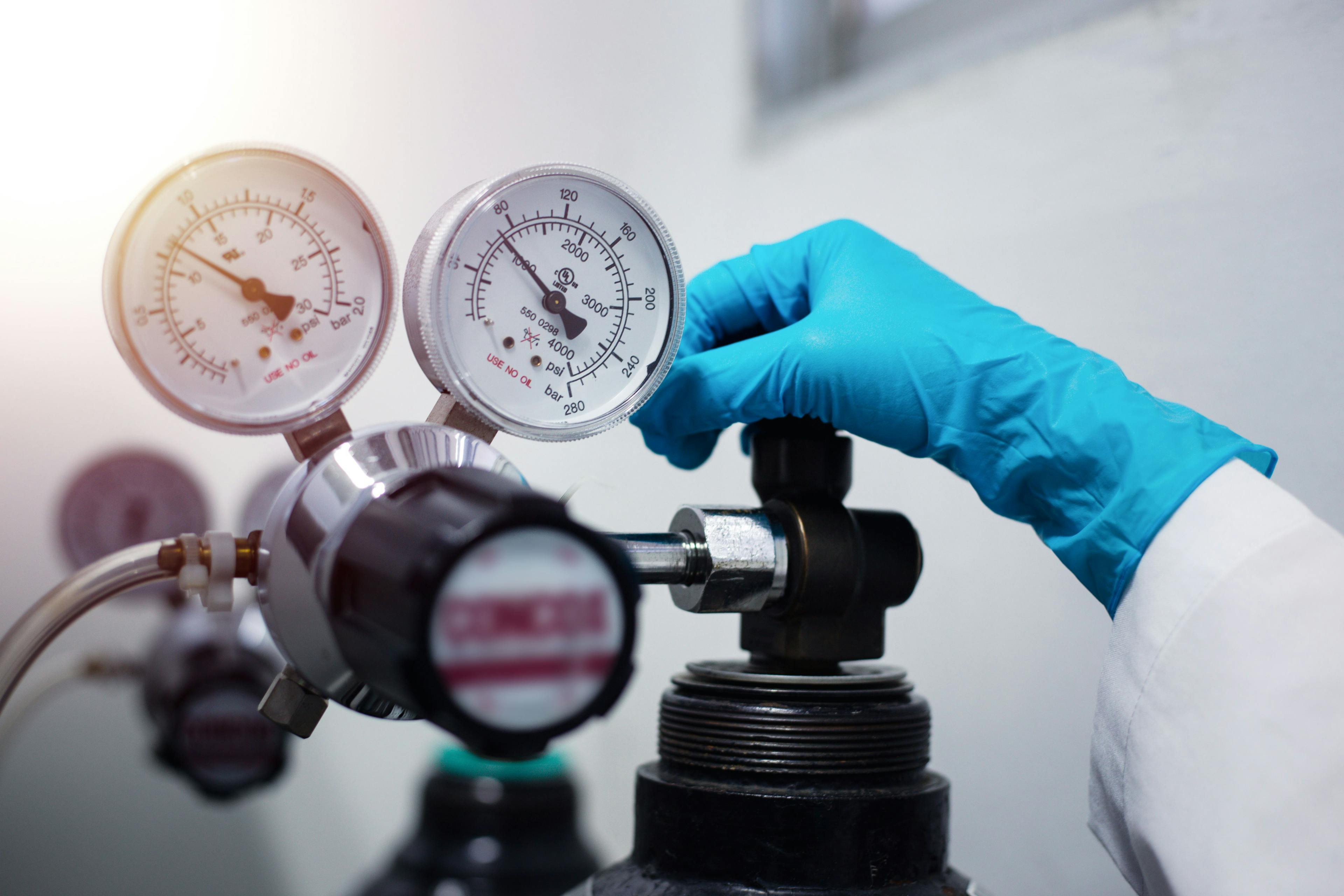Modern Mineral Oil Hydrocarbon Analysis
Giorgia Purcaro has a degree in food science and technology and a Ph.D. in food chemistry. As a postdoc, she specialized in advanced chromatographic techniques, particularly GC×GC, LC–GC, and LC–GC×GC. Since 2018 she has been appointed as analytical chemistry professor at Gembloux Agro-Bio Tech (University of Liège, Belgium). Her main areas of application are related to food quality and safety. She was awarded the L.S. Ettre (2010) and the J. Philipps (2015) Awards at the Joint International Symposium on Capillary Chromatography & GC×GC Symposium for her contribution to the GC×GC field. She has authored or co-authored more than 110 peer-reviewed publications.

Interview by Alasdair Matheson, Editor-in-Chief, LCGC Europe
Q. Mineral oil hydrocarbon analysis is a hot topic of investigation at the moment. Why is it so important to analyze this group of compounds? What are the main challenges when analyzing them?
A: The presence of mineral oil hydrocarbons (MOH), which are divided into two main groups—mineral oil saturated hydrocarbons (MOSH) and mineral oil aromatic hydrocarbons (MOAH)—has been known since the 1990s. However, attention to this type of contamination only began in 2008, when a significantly high amount of MOH was found in sunflower oil originating from Ukraine, followed shortly after by a concerning amount found from the migration of recycled cardboard into dry food (pasta) (1,2). Since then, several scandals have been reported in the press, particularly by Foodwatch International (3), thus raising concerns about this very complex class of contaminants. This complexity makes the topic challenging, both from the toxicological evaluation—for which it would be necessary to characterize the toxicity of each compound and their interactions (synergism or antagonism)—and the analytical determination. Indeed, a reliable and detailed characterization is needed to perform the risk assessment and assure consumer safety. The analytical methods for MOSH/MOAH analysis in food are particularly challenging because these contaminants are closely related to the lipid fraction with which they share many similar chemical structures. Therefore, the sample preparation and purification is rather extensive, and many interferences may still remain in the final determination, requiring expert evaluation for interpretation of the chromatograms and achieving accurate results. Moreover, the routine method applied, that is, liquid chromatography–gas chromatography–flame ionization detection (LC–GC–FID), only provides information on the total MOSH/MOAH in a specific volatility range but no further details on the chemical structure (the number of aromatic rings or the degree of alkylation). Comprehensive two-dimensional gas chromatography (GC×GC) is the key analytical technique that can provide this additional information, and it has started to gain attention in recent years. In fact, the enhanced chromatographic separation and the formation of clear chemical patterns in the two-dimensional (2D) space offer a detailed characterization according to the sub-classes composing either MOSH and MOAH, which have different relevance from a toxicological standpoint. Moreover, the 2D separation and visualization offer great support in the interpretation of the chromatograms, separating the bleeding and chromatographically removing some of the interferences from the compounds of interest.
Q. You have developed a liquid chromatography–comprehensive multidimensional gas chromatography time-of-flight mass spectrometer/flame ionization detector (LC–GC× GC–TOF-MS/FID) method for mineral oil analysis that was validated using interlaboratory comparison data (4). Can you tell us more about this?
A: I have been working with GC×GC since my Ph.D., and I am a big supporter of the technique; I think that it deserves a more central place in routine analysis thanks to its enhanced peak capacity and simplified data interpretation. In the field of MOH, it has shown its potential since 2009, when it was used to clarify the contamination found in sunflower oil (5,6). Since then, it has often been used as a confirmation tool, but it had never moved beyond being used for routine quantification—despite some attempts (7–10). Therefore, we decided to take a step forwards and propose a unified LC–GC×GC–TOF-MS/FID platform to perform both routine and confirmatory interpretation in a single analysis. Nevertheless, we had to solve an urgent problem related to the specific integration required to quantify MOSH and MOAH by developing a dedicated 2D software (11). To prove it reliable and convincing for use on a routine level, we had to exit our normal research environment, participating instead in two interlaboratory comparisons (ILCs) to establish the reliable performance of the proposed platform and the robust and accurate quantification (4).
Q. What were the advantages of the method you devised compared to previous techniques and why was interlaboratory comparison data important?
A: Besides the aforementioned advantages related to the better characterization of the unresolved complex mixture (generally called “hump”) generated by the MOSH and MOAH thanks to the GC×GC enhanced separation for answering toxicological questions and related data occurrence, the use of a completely unified platform allowed for a higher degree of automation, thus avoiding cross-contamination and losses and simplifying the sample introduction. In fact, not all of the GC inlet can assure an injection without any discrimination in the C10–C50 volatility range, as required by the JRC guidance (12). Therefore, if a programmable temperature vaporization (PTV) injector is fine for just confirmatory information, to assure correct quantification without discrimination, an on-column injector exploiting the partially concurrent eluent evaporation techniques is needed. As this is a rather dedicated introduction system, hyphenating the GC×GC device to the LC system simplifies the overall methodology.
We believed that participating in the ILCs would be a strong proof of the reliability of the proposed system. We therefore joined two ILCs organized by the JRC and the German Society for Fat Science (DGF) and the French Technical Institute for the Study and Research of Fats (ITERG) for the determination of MOAH in infant formula and edible oil, respectively. The ILCs lasted approximately two years, during which we provided all the data to the organizer following the standard operating procedure (SOP) request; in parallel we performed the LC–GC×GC–FID/MS analysis to compare the results (4).
Q. What were your main findings?
A: In a preliminary trial on pure mineral oil (13), the JRC set the required performance of the LC–GC–FID method (that is, relative standard deviation [RSD] lower than 5% and recovery between 92 and 100%). We showed that using the LC–GC×GC platform offered superior results in terms of recovery and repeatability. Repeatability and recovery data for the LC–GC×GC–FID analysis were 2.5% of RSD and 99.1% of recovery at the highest point. These results indicated no losses and no discrimination during the transfer of the fraction from the LC into the GC system, and no modulation problems causing poor release of the high boiling compounds or poor trapping of the lighter one.
Also, the analysis of the real-world samples (oils and infant formulas)—for which the impact of sample manipulation is much more important—showed results completely aligned with the outcomes of the ILCs, thus supporting the reliability of the quantitative analysis performed in GC×GC.
The results clearly showed that the proposed platform could successfully perform quantitative analysis, and provide the confirmatory information that may be required in particular cases. Moreover, the routine analysis by LC–GC×GC–FID—implying the reliable quantification of the 2D data—can provide additional information related to the MOAH with 1–2 rings and the MOAH with more than 3 rings (11,14–16), thus filling a critical gap for the risk assessment.
Finally, the 2D separation allowed the chromatographic removal of some interfering peaks, thus providing a more straightforward interpretation, more robust results, accurate quantification, and a deeper characterization of the contamination (14).
Q. Are you planning to explore this research further?
A: We will certainly continue this important research because more detailed data are needed to be able to perform a complete risk assessment of the MOSH and, in particular, the MOAH fractions; this has also been requested by the recent EFSA opinion, available for public consultation since the middle of March (17).
It is indeed my opinion that now that all the necessary tools and proof of reliability are available, GC×GC should be applied at a routine level to provide the necessary level of information.
We will therefore continue to generate data to convince of the validity of the proposed approach. We are also starting a project that combines the detailed characterization provided by this advanced chromatographic technique with in vitro toxicological studies.
References
(1) Hochegger, A.; et al. Mineral Oil Risk Assessment: Knowledge Gaps and Roadmap. Outcome of a Multi-Stakeholders Workshop. Food Chem. Toxicol. 2021, 113, 151–166. DOI: 10.1016/j.tifs.2021.03.021
(2) Sdrigotti, N.; Collard, M.; Purcaro, G. Evolution of Hyphenated Techniques for Mineral Oil Analysis in Food. J. Sep. Sci. 2021, 44, 464–482. DOI: 10.1002/jssc.202000901
(3) FoodWatch, Toxic mineral oil found in food products. https://www.foodwatch.org/en/news/2021/toxic-mineral-oil-found-in-food-products/ (accessed 2023-03-21).
(4) Bauwens, G.; Barp, L.; Purcaro, G. Validation of the Liquid Chromatography Comprehensive Multidimensional Gas Chromatography-Time-of-Flight Mass Spectrometer/Flame Ionization Detector Platform for Mineral Oil Analysis Exploiting Interlaboratory Comparison Data. Green Anal. Chem. 2023, 4, 100047. DOI: 10.1016/j.greeac.2022.100047
(5) Biedermann, M.; Fiselier, K.; Grob, K. Aromatic Hydrocarbons of Mineral Oil Origin in Foods: Method for Determining the Total Concentration and First Results. J. Agric. Food Chem. 2009, 57 (19), 8711–8721. DOI: 10.1021/jf901375e
(6) Biedermann, M.; Grob, K. Comprehensive Two Dimensional GC after HPLC Preseparation for the Characterization of Aromatic Hydrocarbons of Mineral Oil Origin in Contaminated Sunflower Oil. J. Sep. Sci. 2009, 32 (21), 3726–3737. DOI: 10.1002/jssc.200900366
(7) Biedermann, M.; et al. Mineral Oil in Human Tissues, Part II: Characterization of the Accumulated Hydrocarbons by Comprehensive Two-Dimensional Gas Chromatography. Sci. Total Environ. 2015, 15, 506–507, 644–655. DOI: 10.1016/j.scitotenv.2014.07.038
(8) McCombie, G.; et al. Compliance Work for Polyolefins in Food Contact: Results of an Official Control Campaign. Food Control 2016, 59, 793–800. DOI: 10.1016/j.foodcont.2015.06.058
(9) Purcaro, G.; et al. Detailed Elucidation of Hydrocarbon Contamination in Food Products by Using Solid-Phase Extraction and Comprehensive Gas Chromatography with Dual Detection. Anal. Chim. Acta 2013, 773, 97–104. DOI: 10.1016/j.aca.2013.03.002
(10) Zoccali, M.; Tranchida, P. Q.; Mondello, L. OnLine Liquid Chromatography-Comprehensive Two Dimensional Gas Chromatography with Dual Detection for the Analysis of Mineral Oil and Synthetic Hydrocarbons in Cosmetic Lip Care Products. Anal. Chim. Acta 2019, 1048, 221–226. DOI: 10.1016/j.aca.2018.10.069
(11) Bauwens, G.; Pantó, S.; Purcaro, G. Mineral Oil Saturated and Aromatic Hydrocarbons Quantification: Mono- and Two-Dimensional Approaches. J. Chromatogr. A 2021, 1643, 462044. DOI: 10.1016/j.chroma.2021.462044
(12) Guidance on Sampling, Analysis and Data Reporting for the Monitoring of Mineral Oil Hydrocarbons in Food and Food Contact Materials, Bratinova, S.; Hoekstra, E., Eds.; Publications Office of the European Union, Luxembourg, 2019. DOI: 10.2760/208879
(13) Goncalves, C.; et al. Determination of MOSH/ MOAH in Shell SN500 Mineral Oil; JRC IF 2021- 03 - The 3rd Interlaboratory Comparison. Publ. Off. Eur. Union 2022, 127743.
(14) Bauwens, G.; Conchione, C.; Sdrigotti, N.; Moret, S.; Purcaro, G. Quantification and Characterization of Mineral Oil in Fish Feed by Liquid Chromatography-Gas Chromatography-Flame Ionization Detector and Liquid Chromatography-Comprehensive Multidimensional Gas Chromatography-Time-of-Flight Mass Spectrometer/Flame Ionization Detector. J. Chromatogr. A 2022, 1677, 463208. DOI: 10.1016/j.chroma.2022.463208
(15) Bauwens, G.; et al. Investigation of the Effect of Refining on the Presence of Targeted Mineral Oil Aromatic Hydrocarbons in Coconut Oil. Food Addit. Contam. - Part A 2023, 40 (3), 392–403. DOI: 10.1080/19440049.2022.2164621
(16) Biedermann, M.; Eicher, A.; Altherr, T.; McCombie, G. Quantification of Mineral Oil Aromatic Hydrocarbons by Number of Aromatic Rings via Comprehensive Two-Dimensional Gas Chromatography: First Results in Food. J. Chromatogr. Open 2022, 2, 100072. DOI: 10.1016/j.jcoa.2022.100072
(17) EFSA, Public Consultations. https://connect.efsa.europa.eu/RM/s/publicconsultation2/a0l09000006qqHf/pc0400 (accessed 2023-03-21)

Analytical Challenges in Measuring Migration from Food Contact Materials
November 2nd 2015Food contact materials contain low molecular weight additives and processing aids which can migrate into foods leading to trace levels of contamination. Food safety is ensured through regulations, comprising compositional controls and migration limits, which present a significant analytical challenge to the food industry to ensure compliance and demonstrate due diligence. Of the various analytical approaches, LC-MS/MS has proved to be an essential tool in monitoring migration of target compounds into foods, and more sophisticated approaches such as LC-high resolution MS (Orbitrap) are being increasingly used for untargeted analysis to monitor non-intentionally added substances. This podcast will provide an overview to this area, illustrated with various applications showing current approaches being employed.

.png&w=3840&q=75)

.png&w=3840&q=75)



.png&w=3840&q=75)



.png&w=3840&q=75)









